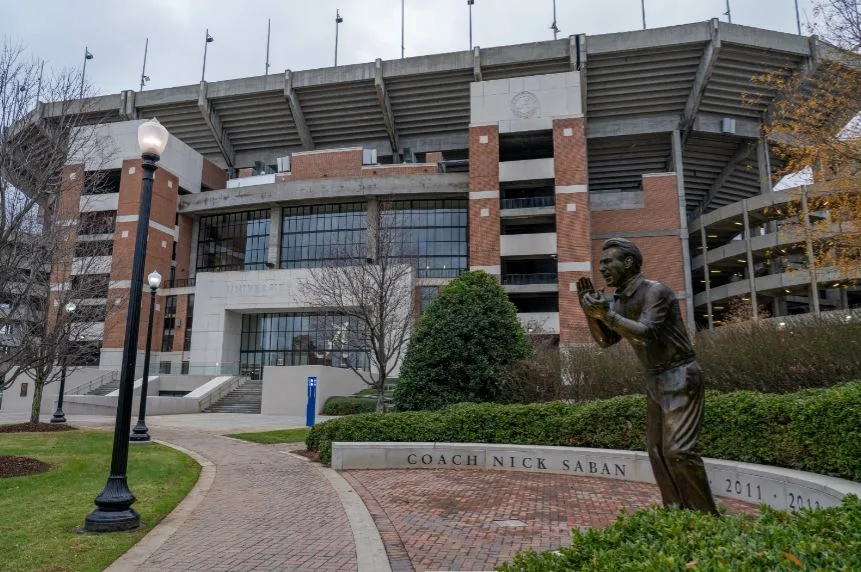The Legacy of Alabama Football: A Dynasty Decades in the Making
Alabama football has built one of the most storied legacies in college sports, with a tradition of excellence spanning over a century. From its humble beginnings in 1892 to its modern dominance, the Crimson Tide’s success is rooted in legendary coaches, iconic moments, and a relentless drive for greatness. Here’s how the Tide became a dynasty that defines college football.
Early Foundations and the Rise to Prominence
Alabama’s football journey began with a 56-0 win over a Birmingham high school team in 1892, led by student William G. Little, marking the program’s first step toward prominence. The team gained national attention in 1926 when coach Wallace Wade led a dramatic 20-19 upset over Washington in the Rose Bowl, earning Alabama’s first national championship. This victory proved Southern teams could compete with national elites, cementing Alabama’s place in football history. The early years, driven by coaches like Wade and Xen Scott, set a foundation of grit and ambition that endures.
Coach Xen Scott’s 1919 season, with an 8-1 record, marked Alabama’s first significant success. This was followed by a 10-1 season in 1920, led by players like Mulley Lenoir and Joe Sewell. These wins showcased Alabama’s potential to dominate the Southern Conference. The program’s early titles in the 1920s and 1930s built a culture of excellence. By the 1930s, Alabama had claimed multiple championships, setting the stage for decades of success.
The Bear Bryant Era
Paul “Bear” Bryant, coaching from 1958 to 1982, elevated Alabama to new heights, winning six national championships. His innovative strategies and iconic moments, like the 1979 Sugar Bowl goal-line stand against Penn State, defined Bryant’s tenure and secured another title. His leadership turned Alabama into a national symbol of football excellence.
Bryant’s era produced stars like Joe Namath and Kenny Stabler, who carried Alabama’s reputation into the NFL. His disciplined approach and ability to inspire players created a lasting legacy. The team’s consistent success, including back-to-back titles in 1978 and 1979, solidified Alabama as a dynasty. Bryant-Denny Stadium stands as a testament to his enduring influence.
The Saban Dynasty and Modern Success
Nick Saban’s arrival in 2007 sparked a new golden era, marked by six national championships between 2009 and 2020, which redefined modern college football. His focus on process, discipline, and recruiting top talent, like Heisman winners Mark Ingram and Derrick Henry, made Alabama nearly unstoppable. Saban’s teams dominated with a modern, adaptable style, blending strong defense with dynamic offenses led by quarterbacks like Tua Tagovailoa. This era, often called a dynasty by analysts, set a new standard for excellence.
Alabama’s recent success includes 11 SEC titles since 1992, more than any other school. The program’s ability to produce NFL talent, with 47 first-round draft picks since 2009, reflects its elite status. Saban’s retirement in 2023 marked the end of an era, but coach Kalen DeBoer continues the tradition with a focus on sustained excellence. Alabama’s consistent success keeps it at the forefront of college football.
Fan Culture and Traditions
Alabama’s fanbase is a cornerstone of its legacy, with the “Roll Tide” chant echoing at every game. The Million Dollar Band’s “Yea Alabama!” after touchdowns and the Walk of Champions pregame ritual unite fans and players. The elephant mascot, adopted in 1979, symbolizes the team’s unstoppable spirit. These traditions create a vibrant community that fuels the program’s enduring success.
A Legacy That Endures
Alabama’s dynasty is more than wins; it’s a culture of pride, from iconic traditions to championship trophies. The Crimson Tide remains unmatched by blending history, coaching brilliance, and fan passion. This legacy inspires generations, ensuring Alabama’s place as college football’s gold standard.



